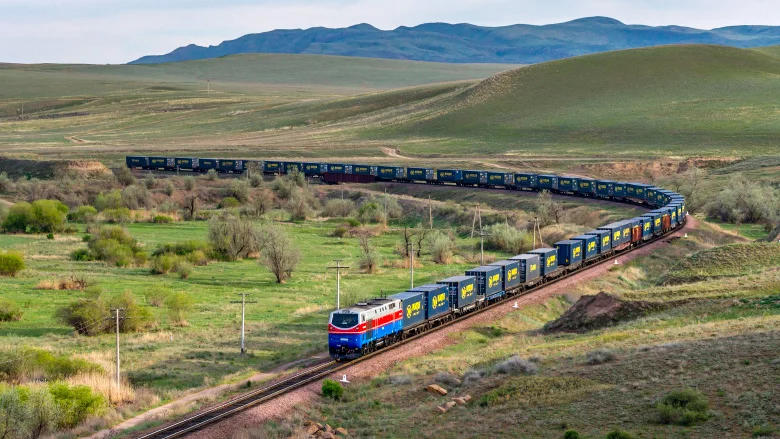BAKU, Azerbaijan, November 18. The rapid growth of freight traffic along the Middle Corridor is increasing its importance for Eurasian trade, but growing challenges may limit the route's further development, the IRU Secretary General, Umberto de Pretto, said at the International Forum on Multimodal Transportation, held this week in Tashkent, Trend reports via IRU.
"We operate in an environment defined by ongoing challenges facing global supply chains.
It is striking that, after thousands of years, we are once again discussing how to revive the ancient trade routes of the Silk Road to stimulate trade and strengthen transport connectivity," he said.
According to the IRU, since 2022, many players in the logistics sector have turned to the Middle Corridor as a viable alternative to traditional transit routes, and freight volumes are expected to triple by 2030 compared to 2021.
Trade along the Middle Corridor is also growing. Previously, it focused mainly on commodities such as oil and minerals, but now it is rapidly shifting towards container transport, which has more than tripled in volume over the past 12 months. More than 60% of container traffic consists of Chinese products destined for Europe.
The number of semi-trailer trucks on this route has grown from 3,000-5,000 units in 2015 to more than 19,400 units in 2022, with a potential capacity of up to 40,000 units, depending on the availability of RO-PAX ferries.
This rapid growth in freight traffic through the Middle Corridor has brought new opportunities, but also challenges that require coordinated responses," said Umberto de Pretto.
According to him, border crossings along the Middle Corridor are under serious pressure. Congestion and long queues have become commonplace.
He noted that the time required to cross the corridor can also vary significantly.
"In some cases, transit is fairly quick, but shippers need predictability and reliability. These problems are caused not so much by infrastructure deficiencies as by the inconsistent application of existing instruments. With the International Road Transport (TIR) system, a truck is inspected only at the point of departure and destination," Umberto de Pretto said.
He said that existing UN transport conventions, such as TIR and CTPG, applied by countries along the corridor, provide a reliable legal framework for facilitating trade and reducing costs. The global TIR transit system has been shown to reduce border crossing times by up to 92 percent, cut transport costs by up to 50 percent, and reduce CO₂ emissions in border areas by up to 90 percent.
Another key challenge facing the Middle Corridor is the varying levels of digital development along its route. Some countries still rely on paper documents, while others are implementing advanced digital platforms.
Investments in both hard infrastructure and soft procedures, services, and tools are necessary to ensure the capacity of congested border crossings," said Umberto de Pretto.
He said that in order to maximize the corridor's potential and increase its sustainability, the strategic focus should shift towards soft solutions in the area of trade and transit.
"Building on these steps, the next challenge is the widespread implementation of eTIR. The transition to digital technologies and electronic transport documents can save up to four days when international cargo crosses borders.
eTIR will also help extend the benefits of TIR to intermodal transport, creating new opportunities for the efficient integration of different modes of transport.
Together with OTS, the IRU is working on the implementation of eTIR, e-CMR, and other initiatives," said Umberto de Pretto, adding that digitalization not only facilitates trade but also makes it safer and more transparent.







